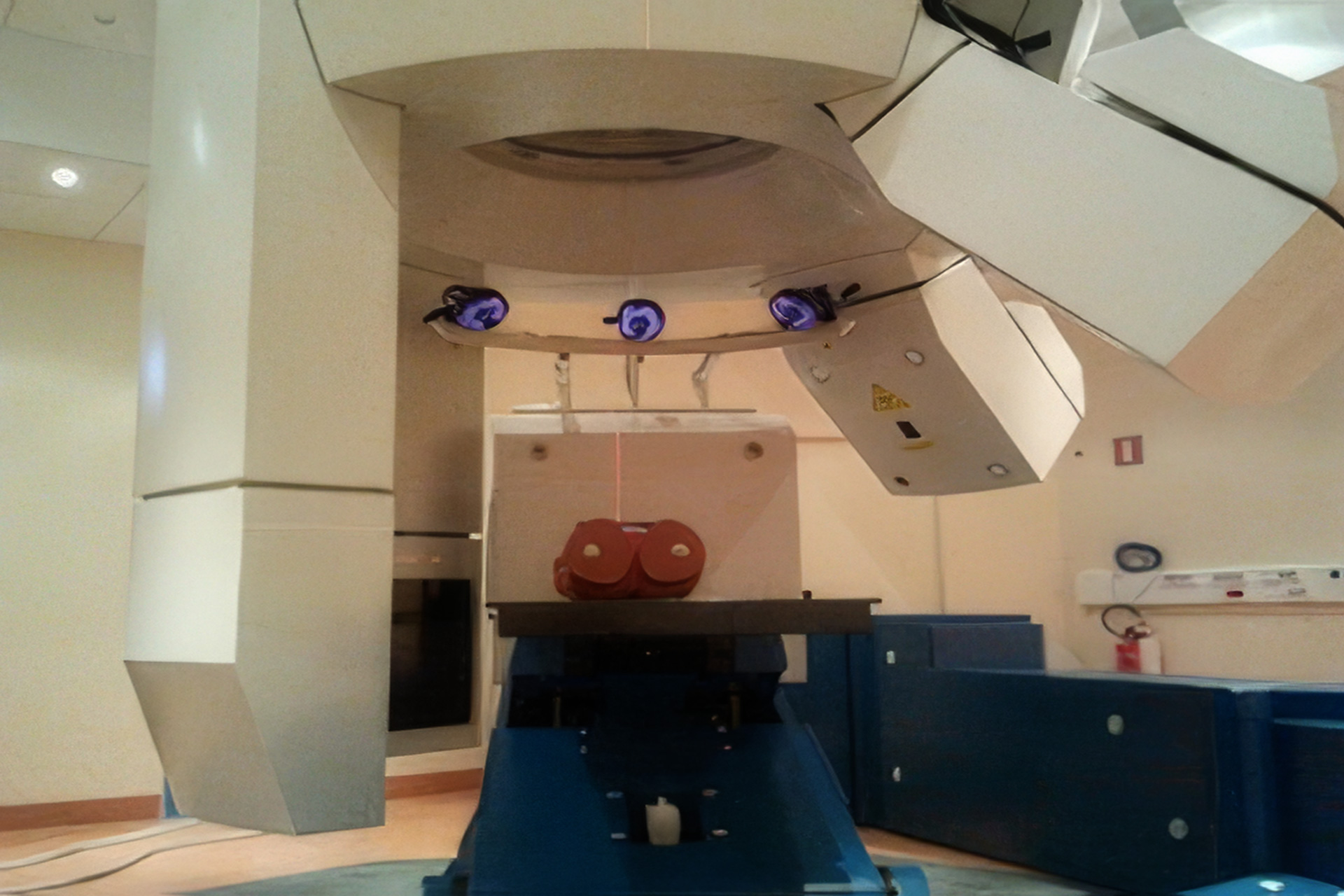Patient Positioning System
Development of a robotic 6 DOF patient positioning system (PPS) based on pantographic architecture featuring high positional open-loop accuracy with varying weight. This is combined with infra-red optical tracking for set-up and immobility verification and double X-ray projection systems for 2D-3D registration. This system is installed at the National Centre of Oncological Hadrontherapy (CNAO, Pavia, Italy).

In-room imaging
Implementation of an ad-hoc in-room imaging system for patient set-up verification and possible treatment adaptation. The system is installed at CNAO and clinically adopted since 2013, and consists of:
- C-arm with kV X-ray tube and flat panel mounted on a 6-DOF robotic serial manipulator
- Dedicated software for multiple imaging and 2D-3D image registration, and cone-beam CT (CBCT)
The development of a similar system is currently ongoing – to be installed in the lateral (N°1) room of CNAO. It will feature:
- C-arm with kV X-ray tube, custom collimator and a displaceable flat panel mounted on a 7-DOF robotic serial manipulator
- Dedicated software for multiple imaging and 2D-3D image registration, cone-beam CT (CBCT) and 3D-3D registration
- Upgrades to the Field Of View (FOV), safety of the acquisition protocol and registration framework
Eye Tracking system
Implementation of an eye tracking system (ETS) for the treatment of ocular melanoma with proton therapy. This system allows one to:
- localize cornea and pupil centers on stereo images captured by two calibrated infra-red video cameras, exploiting eye reflections produced by infrared illumination.
- estimate the 3D position and orientation of the eye
- map the position of the lesion to be treated by combining ETS measurements with volumetric imaging for treatment planning (CT, MRI), enabling real-time tumor referencing during treatment setup and irradiation
A technological platform based on active robotic manipulators and optical tracking-based guidance is currently used at CNAO for patient gaze direction control and monitoring.
![]()